How the Pontiac Trans Am’s Screaming Chicken got its wings
A beloved symbol of 1970s car culture. An icon of disco-era design. A redneck’s red-letter regalia. It’s gaudy. Garish. Tacky. Even vulgar. And we love it. This is the story of Pontiac’s Screaming Chicken, the largest and most recognizable decal in automotive history.
Lost to time is the name of the man that first referred to the graphic as a “Screaming Chicken.” The nickname came quickly. By the late 1970s, even Car and Driver was using the label. No doubt derogatory, over time the epithet has become one of endearment, although the brand’s hardest purists still hate it. That bunch landed on “hood bird” four decades ago and refuse to budge. Others go with “Rising Phoenix” or simply “Firebird.” The ignorant usually refer to the massive flaming fowl as an Eagle or a Hawk.
Pontiac officially called it the Trans Am Hood Decal and introduced it as option code WW7 on the 1973 Trans Am. At $55 it was popular and would remain on the pony car’s option list, in one form or another and attached to many different option codes, for 11 years. In 1976, Pontiac’s Firebird brochure referred to the Screaming Chicken as “the available giant Firebird hood decal.” Starting that year the unmistakable graphic was glued to the hood of every Special Edition, Anniversary and Pace Car model Trans Am sold until 1981.
Many inside General Motors did not like the large illustration and were surprised by the public’s enthusiasm for the enormous hood bird, as was Car and Driver, which in 1977 called the Trans Am’s graphics cornball. GM designer John Schinella wasn’t surprised by its success. He knew it was going to be a hit and fought his bosses for years to get it on the car.

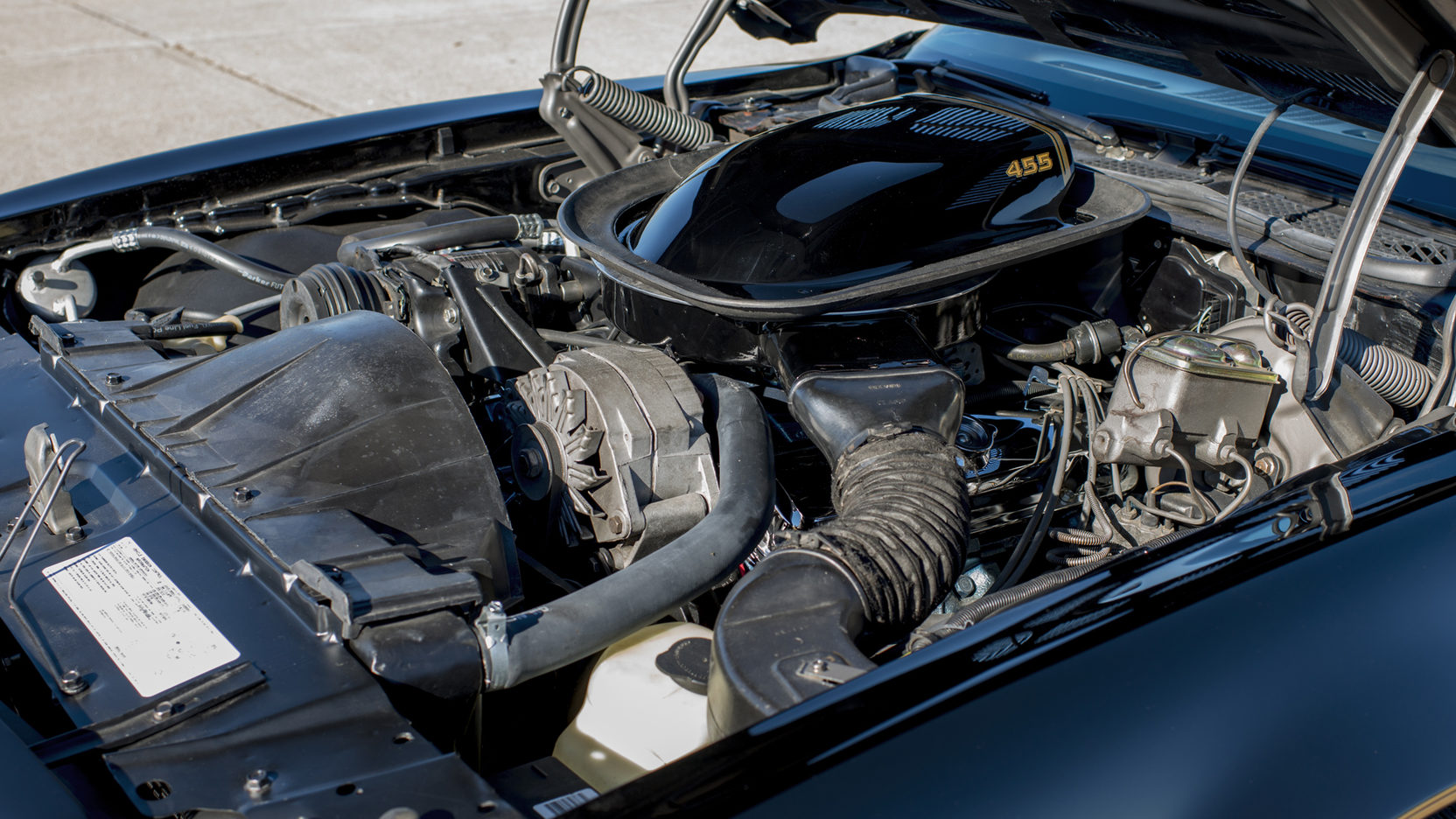

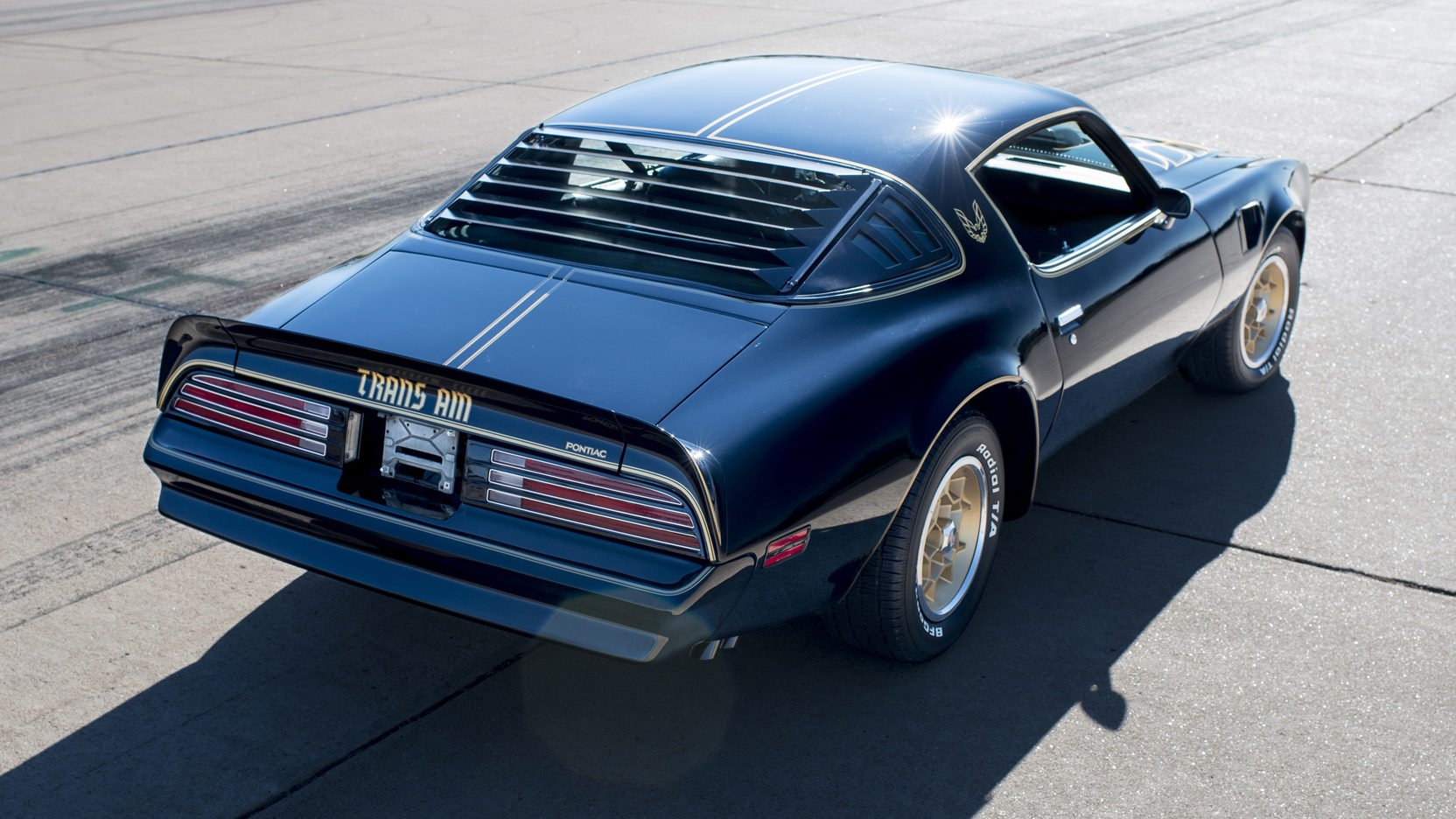
Norm Inouye was its creator, and his efforts on the project got him working with Bill Mitchell, GM’s legendary design czar. The young artist was employed in GM’s Graphics department from 1968–71 and put the first oversized hood bird on the new 1970 ½ Trans Am, at the request of his boss Bill Porter.
“Pontiac proposed to do a decal at the time,” Inouye told author Michael Lamm for his book The Fabulous Firebird published in 1979. “Bill Mitchell walked through the paintshop one day and saw them working on it and didn’t like it. He didn’t want to do it, so the whole idea was shelved for two years. Actually, all the working drawings for that large decal were done before I left in April of 1971. But it didn’t appear on the car until 1973.”
Porter, who designed the 1968 Pontiac GTO, was in charge of the Firebird design studio and is responsible for the shape of the second generation Firebird and Trans Am, as well as Pontiac’s Honeycomb wheel. The man is a genius and a national treasure. Big surprise: he’s also the guy that came up with the first hood bird concept, sketching it on a napkin in 1970. He thought wrapping the bird’s wings around the Trans Am’s reverse-facing hoodscoop would help integrate the appendage into the car.
“The original idea for the big bird decal was done in my studio on a proposed 1971 show Trans Am, in blue and white,” he told journalist Gary Witzenburg for his 1982 book Firebird: America’s Premiere Performance Car. “But Mitchell saw it in our paintshop and hated it. He told me to get it off the car. ‘It looks like something on a Macy’s truck,’ he said.”
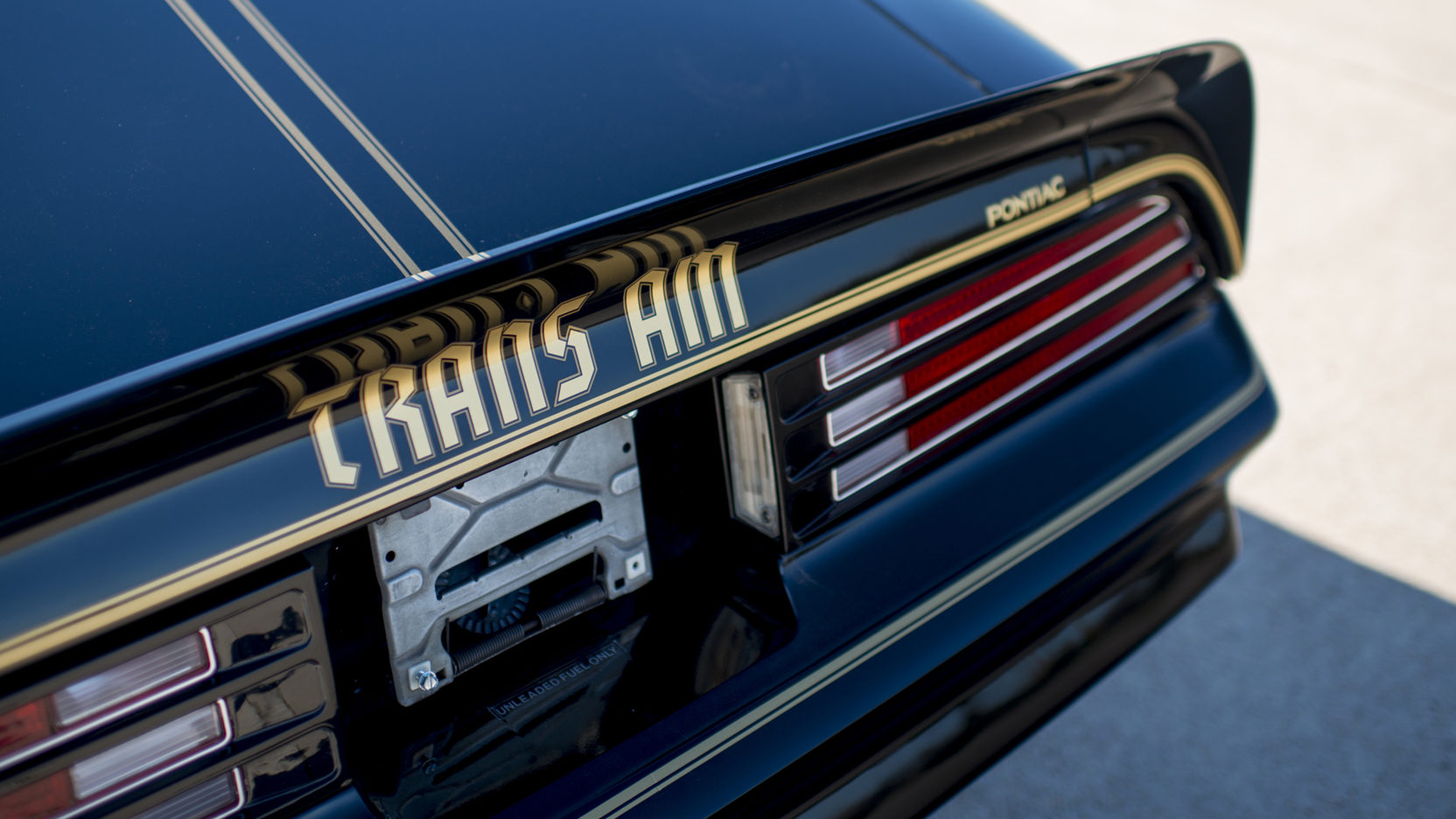
It wasn’t the design of the graphic that chaffed Mitchell, it was its enormous size. On Mitchell’s watch smaller winged bird badges appeared on GM’s Firebird III in 1959, a radical concept car designed by Norm James, as well as first and second-generation production Firebirds from 1967–72.
Until 1970, these images all had the animal’s wings pointed down toward its feet. Norm Inouye’s version, however, flipped that, pointing the wings, now shaped more like flames, up past the bird’s head. His new design first appeared on the 1969 Banshee II concept car and a tweaked version was used on the nose of 1970–72 Trans Ams. It wasn’t exactly small; the decal on the beak of those early second-generation cars is about 12 inches wide.
In August of 1971 Schinella took over the Firebird studio from Porter and began work on updating the Trans Am’s visuals for 1973. He ditched the blue base color and stripped the car of its stripes. “I felt the old stripe up the middle was sort of dated and trite,” he told Witzenburg.
With Roy Hill, who had just returned from assignment at Vauxhall in England, Schinella then added two new colors, red and Brewster Green. Then he went to work resurrecting the idea of the Screaming Chicken, taking his cause to the people. He started driving around town in a Formula Firebird dressed with a Trans Am rear spoiler and a TA hood decorated with the oversized bird.
“We took it out to a few gas stations and drive ins and the people went berzerk [sic],” he told Witzenburg. “I mean, absolutely came unglued! They couldn’t believe it and they loved it! ‘Where’d you get that? Where can I get one?’ It attracted so much attention it was almost like you were walking down the street with no clothes on.”
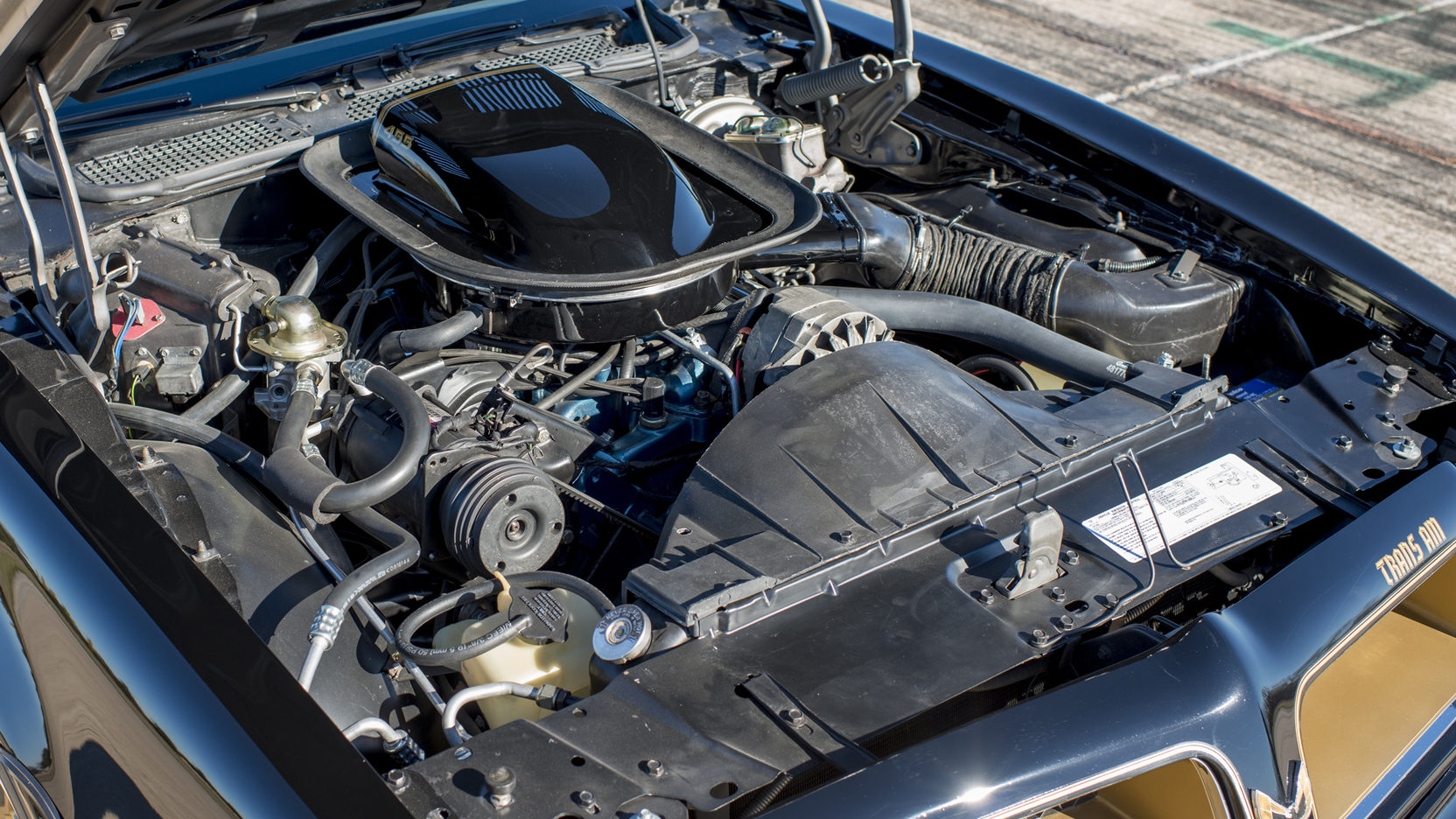
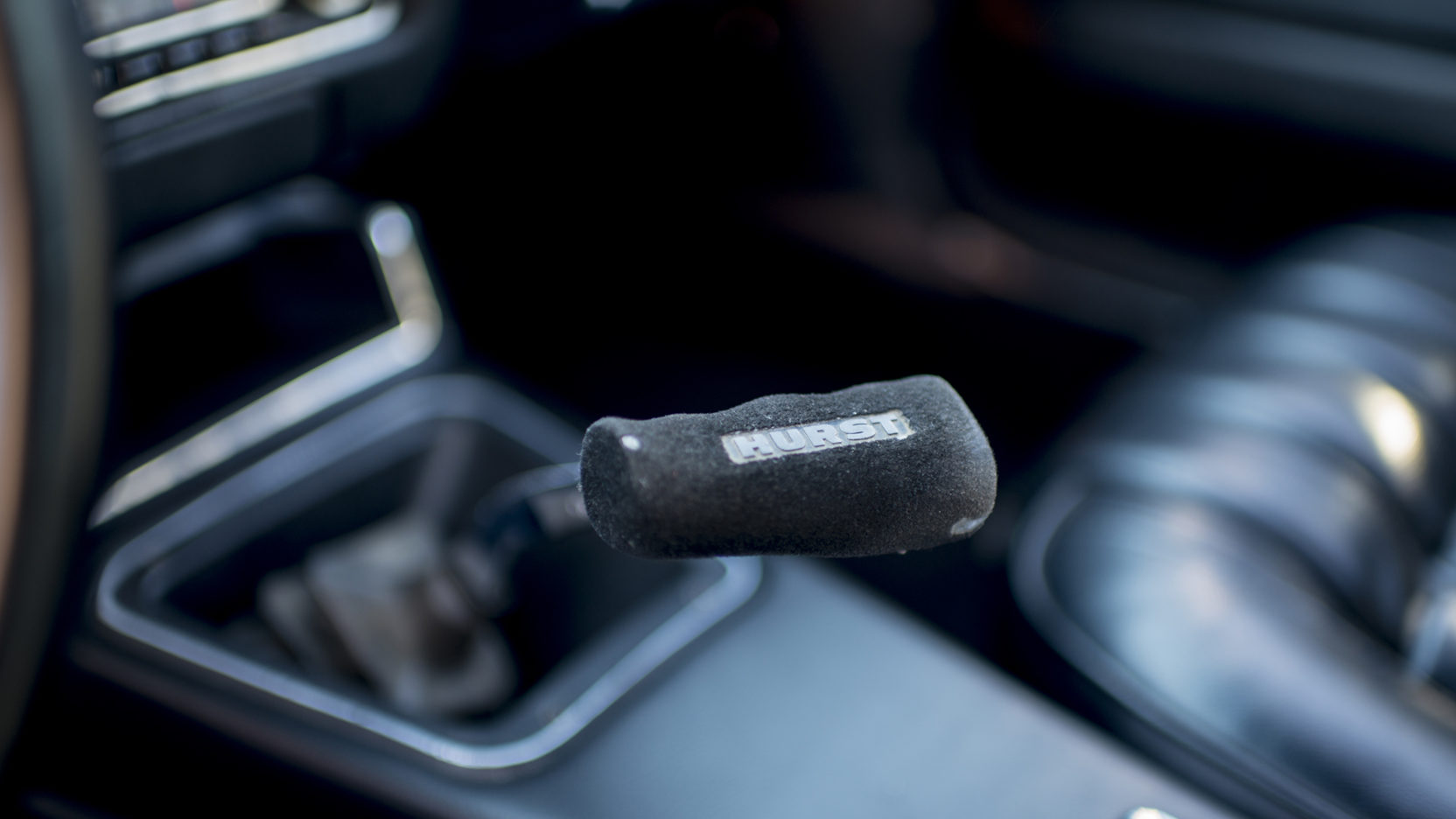
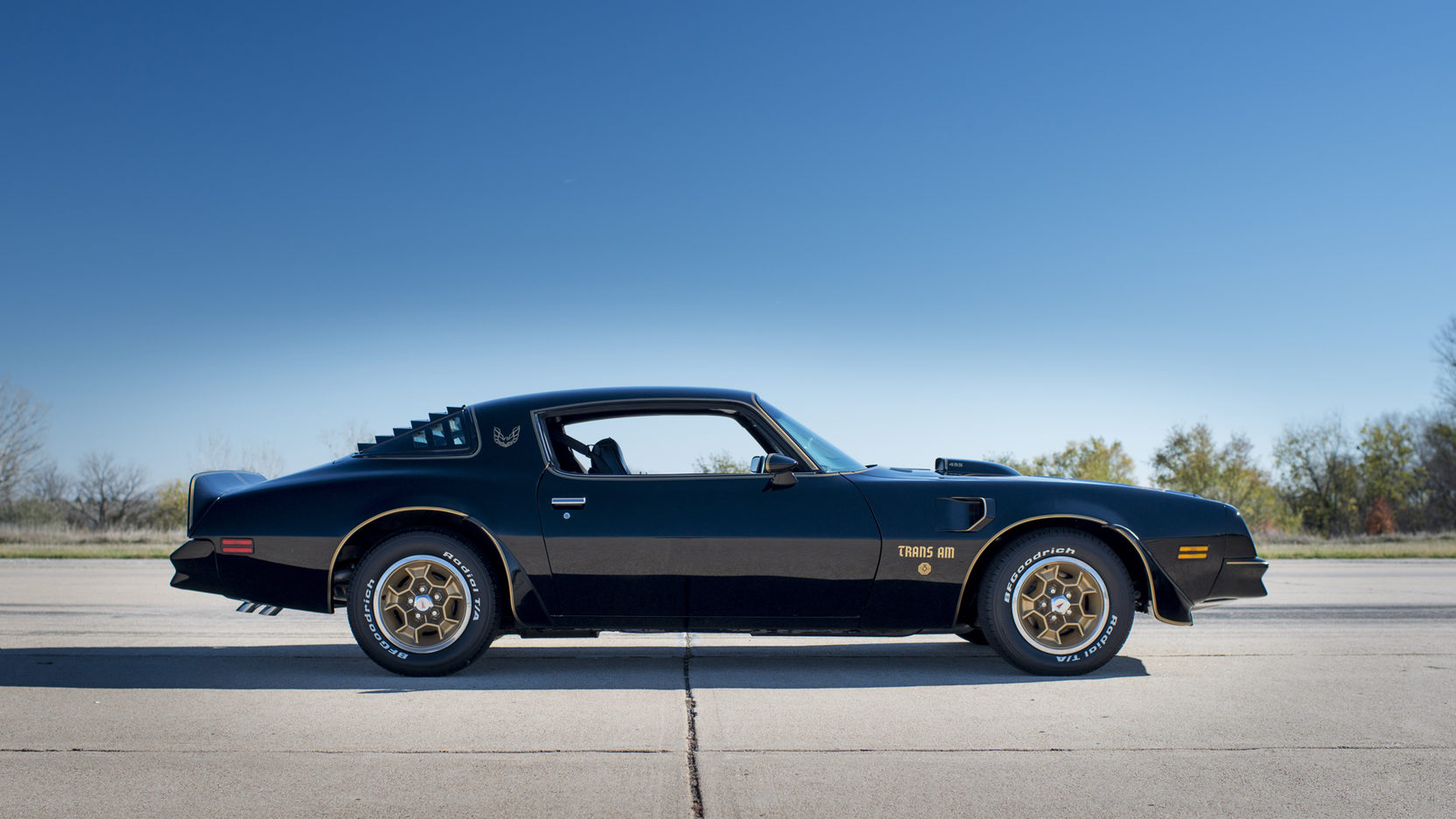
Encouraged—no, convinced—Schinella decided to repitch the idea to his bosses, including Mitchell who still thought the bird was in bad taste. He started refining the idea with Bill Davis, experimenting with the decal’s shape and size. “We did take the Firebird emblem, though, and by using that as a basis and adding our own designs, the 1973 chicken began to evolve,” he told Lamm. “We started working on it in 1971–72, and believe me, the development program to get that bird just right became very intense.”d
The original design was much larger than the bird that went into production in 1973, and the initial tests required a seam down the center because no company at the time produced decal material that could handle a design that large. “So while 3M got busy trying to come up with a material big enough, Bill and I proceeded to make up new birds in different colors—reds, blues, and light greens with a little yellow kicker to them,” he told Lamm.
When the day came Schinella had three Trans Ams, one white, one green and one red, each festooned with color-coordinated chickens, waiting for his bosses in the GM Design Center Auditorium. No one was impressed. But then Pontiac General Manager Jim McDonald green lit the graphic that would become synonymous with the Trans Am. “Let’s give this a try,” he said. “John wants the bird standard on the Trans Am, but let’s make it an option. We’ve got nothing to lose. If it’s not accepted we can withdraw it from the market. If it is, we can expand on it.”
“I don’t know how John did it,” Porter said later in an interview. “Maybe times had changed. John had a way with Mitchell that I never did.”
With the Trans Ams growing sales and the bird’s popularity, even Bill Mitchell praised the decal, telling Witzenburg years later, “It was terrific. It was that kind of thing that really put them ahead of Chevrolet. The Camaro didn’t have anything like that.”
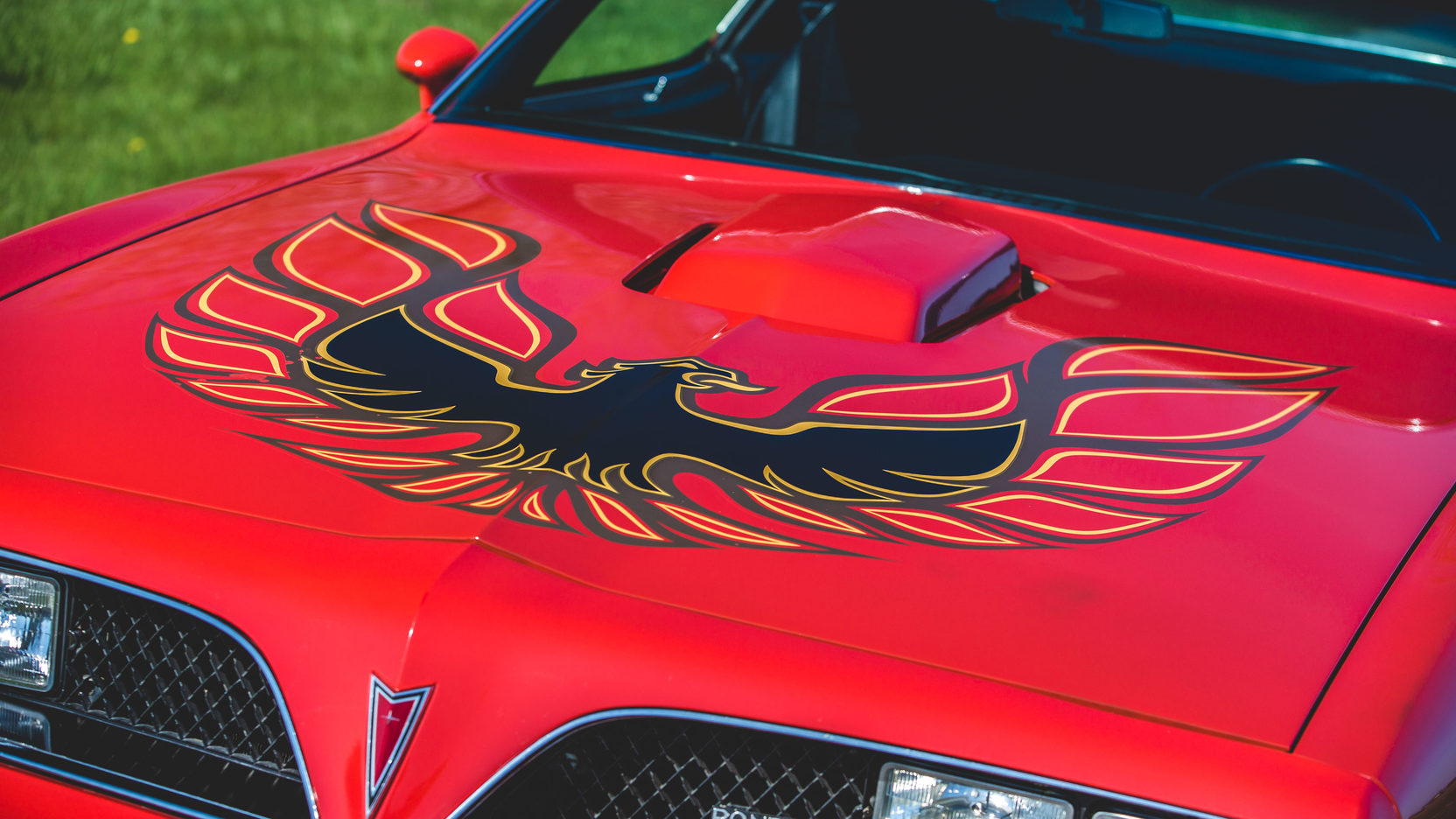
The Screaming Chicken was so successful, other manufacturers began to steal the concept, especially after Smokey and the Bandit ignited Trans Am sales. Just to name a few, Jeep dressed the CJ, J10 and Cherokee with the Golden Eagle package starting in 1976, Ford put a giant snake on the hood of the King Cobra Mustang in 1978 and Chevy got into the act with the El Camino Royal Knight that same year. Schinella was a hero, he would go on to design the Trans Am’s numerous facelifts throughout the 1970s, and is the creator of the black and gold paint scheme that debuted in 1976 and made cinematic history with Burt behind the wheel in 1977.
As engine power and performance waned through the decade, Trans Am sales increased and the Screaming Chicken only got bigger as its design evolved. The original bird, measuring 45.5-inches wide and 44.5-inches long, lasted until 1978. This is the bird that also appears on the black and gold (Y81 or Y82) 1976 50th Anniversary Limited Edition model and the Y81 or Y82 1977 and 1978 Special Edition.
However, in 1978 there were actually two Screaming Chickens. A new larger bird with more elaborate wings debuted on the new Y88 Gold Special Edition, which cost an extra $1263, four dollars more than the Y82 and Y84 Black Special Editions. The larger bird was 47 inches wide and 55-inches tall, and it was the first with its head pointed toward the passenger side of the car. Pontiac retired the original Screaming Chicken design in 1979.
That year all Trans Ams, except the 10th Anniversary cars, got the new larger bird used on the 1978 Gold Special Edition. A new even larger bird with its wings extending onto the front fenders was used on the Anniversary models.
In 1980 and 1981 all naturally aspirated Trans Ams used the same bird as the standard 1979 models, only now the pattern was an inch wider. Pontiac also created, for the new turbocharged Trans Am, a new Screaming Chicken with a more feathery wing design to go with the asymmetrical hood bulge.


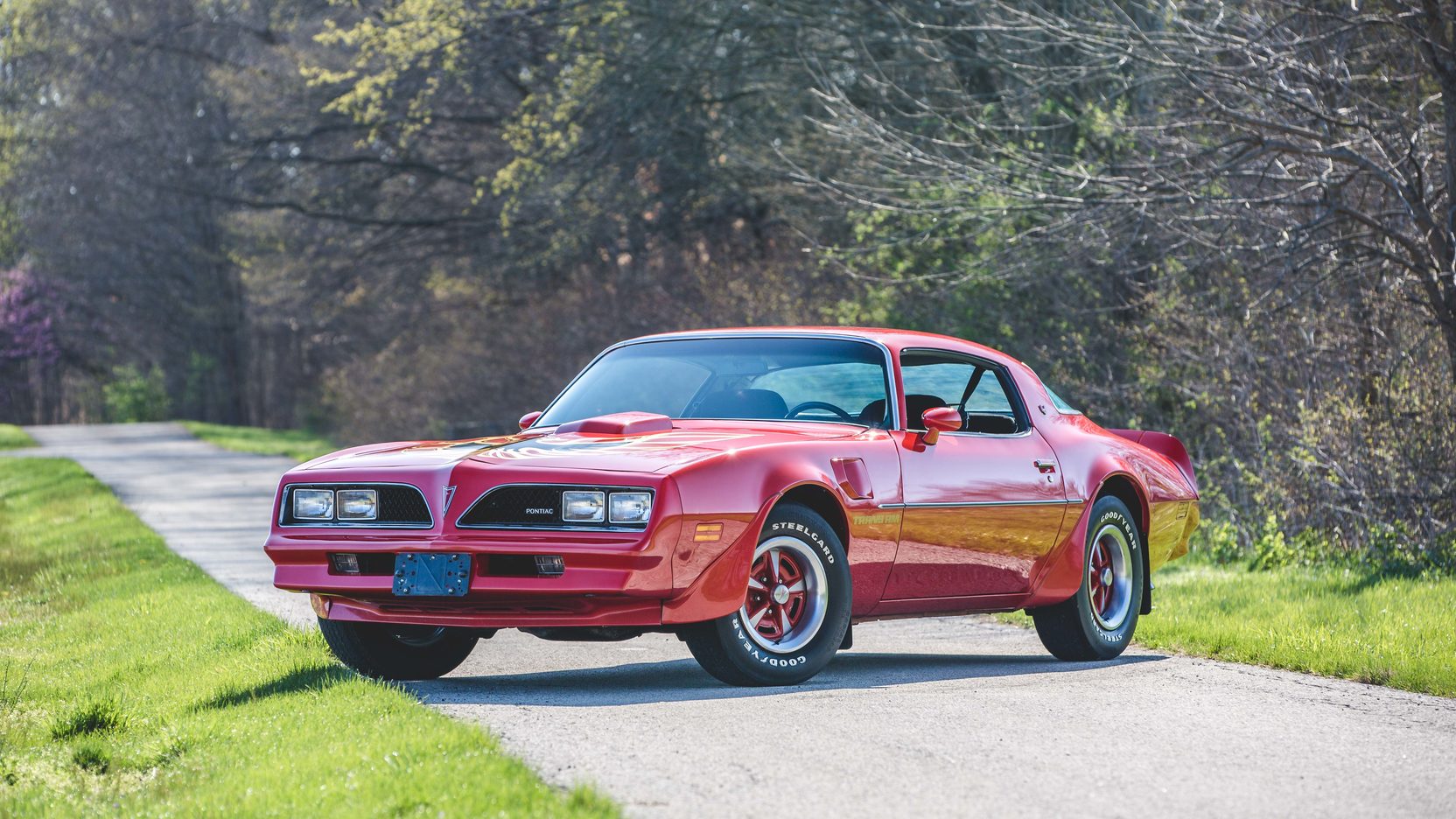
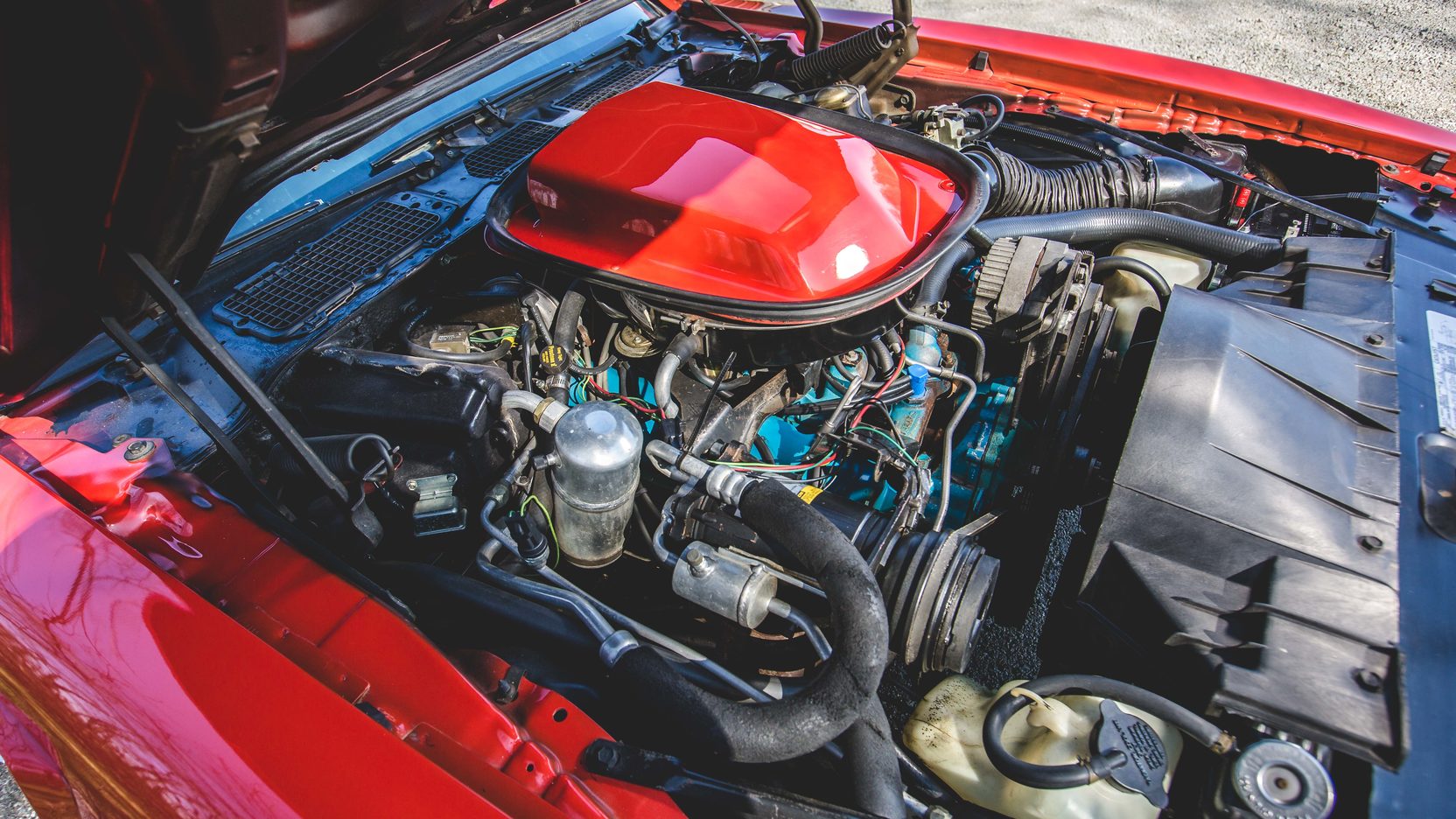
Once again the bird faced the same side of the car, but this time it was spitting an enlarged flame up the hood bulge toward the driver’s face. A variation of this bird appeared on the 1980 Indy 500 Pace Car model, the 1981 Daytona 500 Pace Car Edition, and the 1980 GMC Indy Hauler pickups, although on the truck it was smaller and the bird’s head faced the passenger side of the vehicle.
The following year the all-new third-generation of the Firebird and Trans Am hit the streets. Trans Ams were no longer turbocharged, but they retained the asymmetrical hood bulge design. Sadly, the oversized Screaming Chicken was gone.
In 1985 Pontiac refreshed the Trans Am’s styling, flattening its hood and a simplified “outline style” version of the big bird was back. At 38 inches wide and 41 inches tall it was considerably smaller than previous versions, and its face was again pointing to the passenger side of the car. Option code DX1 was called Hood Applique Decal and it cost $95. But times had changed and the Screaming Chicken was no longer popular. Pontiac discontinued the iconic graphic after the 1987 model year.
Ironically, thanks to nostalgia and the collector car market’s invigorated enthusiasm for second-generation Trans Ams, the big hood bird is today an enduring symbol of the defunct GM brand. Pontiac and the Firebird might be dead, but the Screaming Chicken’s flame flickers on.
***
Check out the Hagerty Media homepage so you don’t miss a single story, or better yet, bookmark it. To get our best stories delivered right to your inbox, subscribe to our newsletters.

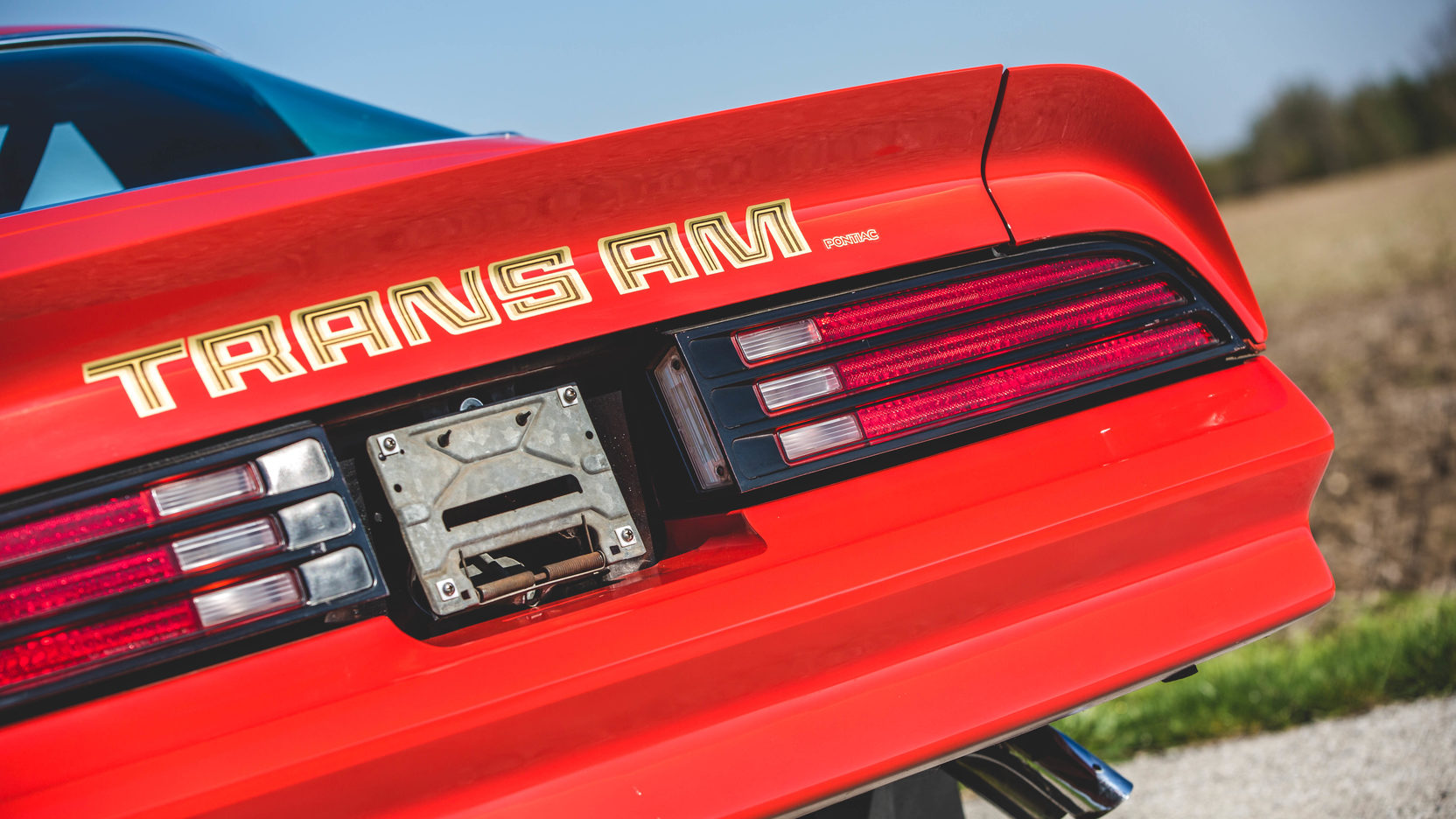
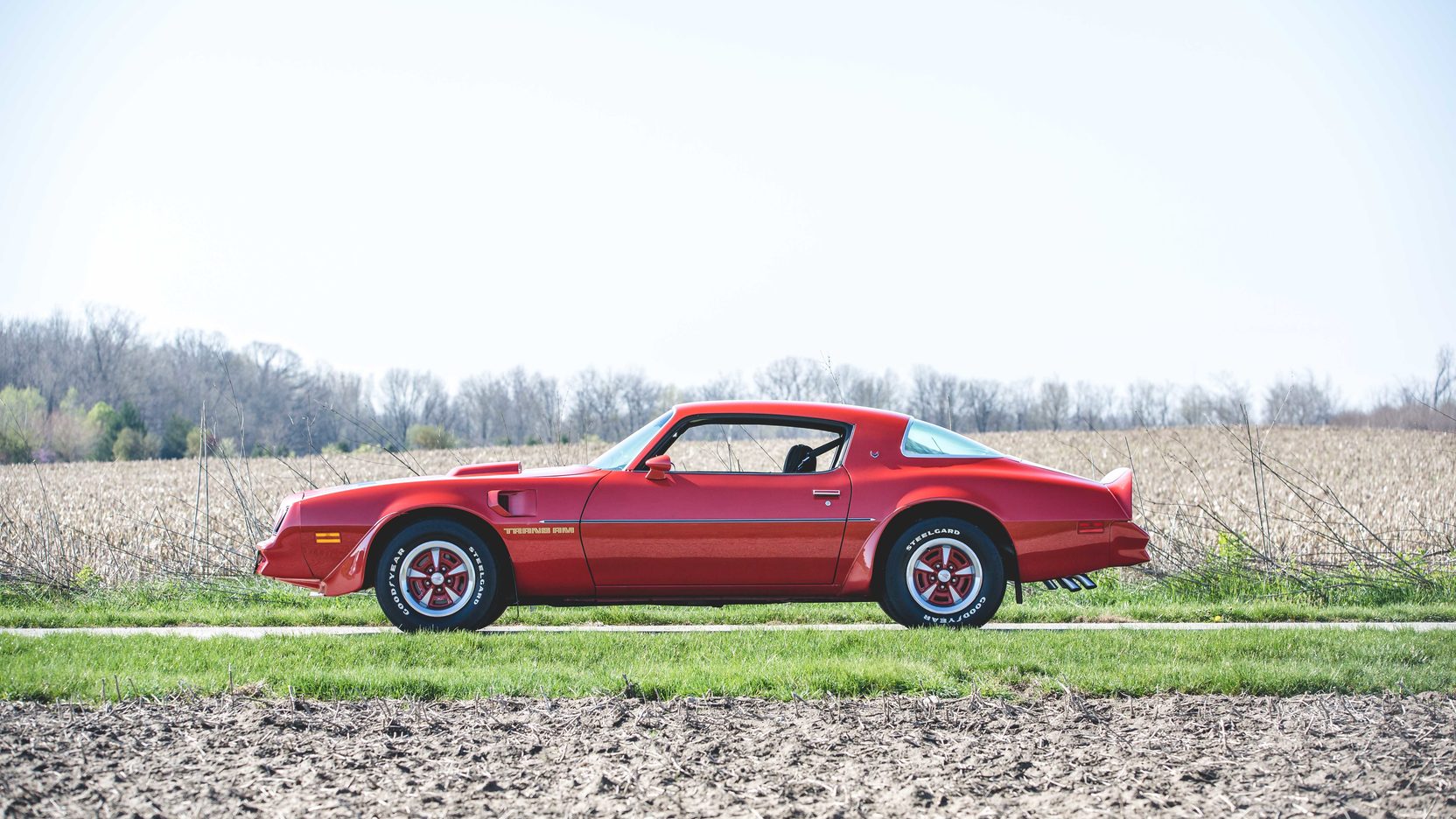


Such an integral part to the success of the 2nd gen TAs. I was never a fan of the look on the thirdgens though. They were too modern looking for it. Although the 84 TA had a smaller “slat” design version that went up the hood bulge that looked pretty cool.
The “slat” design referred to was also available on Trans Ams built late in the 1983 model year. It is rather mundanely referred to as “Hood Applique” on the window sticker, but the salesman who sold me my car referred to it as the “laser bird decal.”
Bill Porter was one of the best designers at GM in his Pontiac years. He was not the stereotype designer. Quiet, contemplative, understated, and a true gentleman. I worked with him at the end of his career in the Buick studio with another styling genius, Andy Hanzel, and never knew about his amazing career until he retired. it was an honor to work with both of them.
Why not show an image of each for a comparison?
This.
I have only run into one person who was offended by the screaming chicken or firechicken tag line. most take it in fun and enjoy it.
He must have been on drugs, if not, he should have been.
The Chicken names were attached to the decal by magazines of the time in hopes buyers would see that it’s too over the top and would choose to leave it off. Rather, I think it backfired as more and more cars were opted with it. I like the decal. Won’t mistake that car for an SUV or EV. There are 2 names I despise.
I had about 25 F Bodies, Y82s, a White 400 4 speed 77 that was probably the best I ever owned, a 78 TA-400 4 speed, a dozen Camaros- Berlinnetas, Z28s, Rally Sports etc.At least 5 Formulas, 2 were 76s, I loved them all, but now they’re gone. Time sure sucks.
I had a 78 400 TA 4 speed ws6 in brown metalflake with tan interior and snowflake wheels. I put 50000 miles on it in 14 months then sold it due to government mandated gas price increase. Silly me. Anyway, this article is about the Firebird decal and there are only 2 picture of if it and countless pictures of at least 2 different cars from many different angles. Either focus on the subject or change the article to suit your pictures.
“Government mandated gas price increase”…what was that? I lived thru that period, but don’t recall that. Details?
2 most nostalgic cars ever were 1 the 77 firebird of course the body was a 76 with a 77 nose clip like Smokey and the Bandit. Every time i drive my 1980 black and gold with the screaming chicken on the hood people stare and give thumbs up stop and talk wave and kids freak out over it. People tell me how there mom/dad friend bf/gf had one or they had one. I even have the Snapon Tool box Black and gold to match my Car only 1500 made im lucky to have one. The 2nd Most iconic Car would have to be the General Lee People love these Cars
Here is a great mini doc on the creation of the firebird hood bird.
https://youtu.be/LGmbemezL_4
It’s got interviews with Bill Porter and John Schinella.
Just to set the records straight Bill David and I never knew about any large bird graphics being done for the Firebird theme. Paint shop and graphics never mentioned this supposed large bird graphics. Pontiac division did not mention this story. Let’s get the story straight instead of putting a spin on the truth. Thank you John Schinella
Iconic, indeed. A late-70’sTrans Am, then or now, just doesn’t look right without it. Redneck-y? So be it.
Did any of the screaming chicken decals have the head facing the other way? I heard a story from a guy I knew long ago he had one?